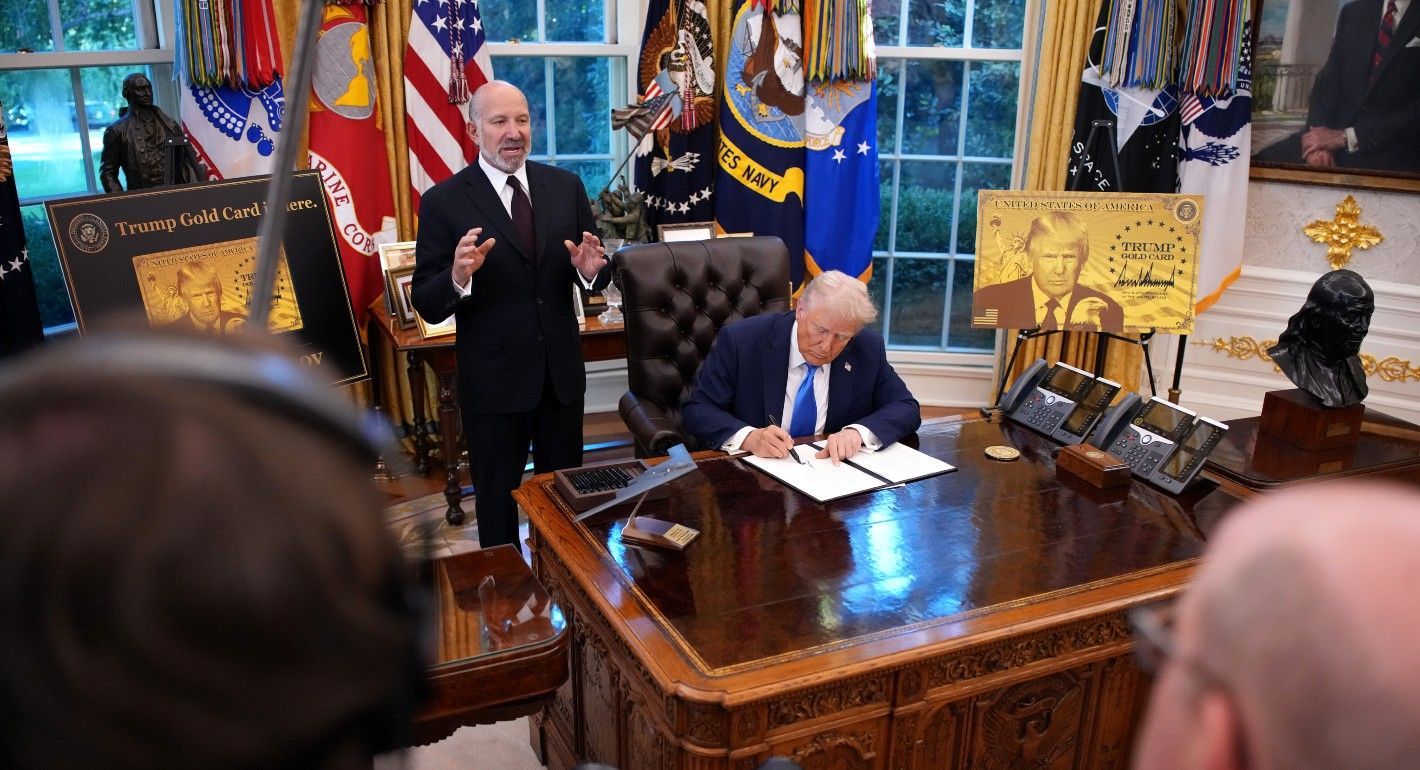President Donald Trump’s decision to impose a $100,000 fee on new H-1B visas—the main channel through which U.S. employers hire foreign professionals in specialized fields such as technology, engineering, and research—has ignited a firestorm over its impacts on U.S. workers and Indian tech firms. But the far greater casualty may be America’s universities, and with them the long-term strength of the U.S. economy.
If the administration justifies large new tariffs on imported goods as a way of curbing the trade deficit, it has conveniently ignored the substantial trade surplus the United States enjoys in services. Education is one of America’s most successful exports. In 2024, roughly 1 million international students brought nearly $55 billion into the economy, supporting 400,000 jobs (about a tenth of all positions in higher education).
For many students, that investment only makes sense if they can work in the United States after graduation—to repay debt, gain experience, and sometimes build careers here. Many hope to remain in the United States, but only about two in five successfully do so over the long run. Even for those who return home, experience in the U.S. labor market boosts career prospects and reinforces the value of a U.S. degree. The new H-1B fee threatens to upend that bargain.
We have seen this movie before. When Britain curtailed post-study work rights in 2012, enrollment stagnated, while Canada and Australia surged ahead. By 2021, the United Kingdom was forced into a humiliating reversal. Even before the latest H-1B gambit, America’s global share of international students had fallen from nearly 30 percent in 2000 to around a fifth among Organization for Economic Co-operation and Development countries and 16 percent among all countries. Visa hurdles remain the most frequently cited barrier. Now, Canada enrolls nearly as many international students as the United States, despite being one-eighth its size.
The financial stakes for U.S. universities are enormous. International students pay far higher tuition than Americans, and their fees effectively subsidize domestic students. At many flagship public universities, international students now account for 20–30 percent of tuition revenue, plugging state budget shortfalls. At the same time, the Trump administration has proposed slashing the budgets of the National Science Foundation and the National Institutes of Health—key lifelines for university research and faculty salaries—by nearly half. Already, more than 1,600 NSF research grants worth $1 billion have been canceled. With both tuition and research funding under threat, universities face a grim choice: cut services or raise costs for American students. Either way, the damage will not fall on foreigners—but on Americans.
Administration officials say the new policy is meant to attract only the “best and brightest.” But this ignores the role U.S. universities play as a filter for talent. Every country has gifted individuals, but U.S. firms cannot easily identify talent in Mumbai, Madrid, or Manila. A degree from Michigan, MIT, or UC–Berkeley is a global signal of quality. Undermining that pipeline doesn’t raise standards—it shrinks the pool of talent on which American innovation depends.
The deeper fallacy is that jobs are zero-sum. Talented workers expand the pie: They create companies, generate demand for complementary jobs, and attract investment. While some studies of the H-1B program find downward wage pressure in certain occupations, the broader evidence also shows high-skilled immigration raises productivity, spurs innovation, and expands overall employment. America’s technology clusters—from Silicon Valley to Boston to North Carolina’s Research Triangle—have been built on a foundation of international talent. America’s competitors know this all too well. The European Union just launched its Choose Europe for Science campaign, and Britain has rolled out a new global talent drive. For its part, China has rolled out a new “K visa” category to attract young foreign STEM talent. They are openly positioning themselves to benefit from Washington’s missteps.
Even the Commerce Department has acknowledged the stakes, writing that “Promoting study in the United States strengthens our economic development through innovation, workforce development, and attracting foreign direct investment.” The administration’s actions contradict its own assessment.
No one disputes that the H-1B program could be improved. A random lottery squanders the chance to target the skills America needs most. A more rational system would prioritize applicants based on skills, wages, and industry demand, and adjust as labor markets shift. A recent proposal from the Department of Homeland Security signals a shift in this direction. But the new H-1B visa levy is not about reform—it is about restrictions. The price will be paid not just by foreign students but by American universities, American workers, and America’s future.
Emissary
The latest from Carnegie scholars on the world’s most pressing challenges, delivered to your inbox.





